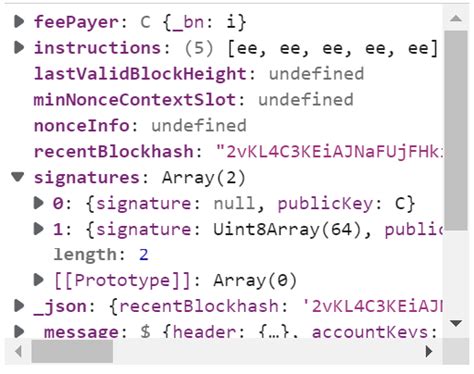Here is a detailed article on how to properly execute a serial Solana transaction from the backend using web3.js and the Solana React Wallet Adapter:
Introduction
Solana is a fast and scalable blockchain platform that allows developers to build decentralized applications (dApps) without the need for complex smart contract programming. One of the key benefits of Solana is its support for serialized transactions, which allows transactions to be executed faster and more efficiently on the network.
In this article, we will walk you through the process of executing a serial Solana transaction from the backend using web3.js and the Solana React Wallet Adapter.
Prerequisites
Before you begin, make sure you have:
- A Solana developer account and wallet address.
- The «web3.js» library installed in your project.
- A backend server that can generate serial transactions (for example, via the Solana CLI or a web application).
Step 1: Generate a serialized transaction
To execute a serial transaction, you must first generate it in the backend using the Solana CLI:
solana-cli --key-path --transaction-type
Replace malleable'), andwith the transaction inputs.
For example:
solana-cli --key-path --transaction-type malleable
This will generate a serial transaction on the backend server.
Step 2: Install web3.js
Make sure web3.jsis installed in your project. You can install it via npm or yarn:
npm install web3
or
yarn add web3
Step 3: Import and use web3.js
In your frontend application, import the web3.js’ library and use it to interact with the Solana network:
Import web3 from 'web3';
const web3 = new Web3(new Web3.providers.HttpProvider('
Step 4: Execute a serial transaction
To execute a serial transaction, you need to send the generated transaction to the backend using the «web3.js» library:
const transactionHash = await web3.eth.sendRawTransaction(hexString);
const receipt = await web3.eth.getTransactionReceipt(transactionHash);
Replace the string
Step 5: Handle and rollback
When executing a serial transaction, it is essential to handle and rollback errors in case something goes wrong:
try {
const transaction = await web3.eth.sendRawTransaction(hexString);
// Execute the transaction on the backend using the "web3" library
} catch (error) {
console.error(error);
}
In a real-world scenario, it makes sense to handle errors and return if something goes wrong. For example:
const transaction = await web3.eth.sendRawTransaction(hexString);
if (!transaction) {
// Rollback the transaction
return;
}
// Execute the transaction on the backend using the "web3" library
Step 6: Display the results to the user

Finally, you need to display the results to the user:
const result = await web3.eth.getTransactionReceipt(transactionHash);
console.log(result);
This is just a basic example of how to execute serialized Solana transactions from the backend using «web3.js» and the Solana React Wallet Adapter. You can customize this process to suit your specific needs.
I hope this article helps you correctly execute serialized Solana transactions on the frontend using web3.js and the Solana React Wallet Adapter!

Leave Your Comment